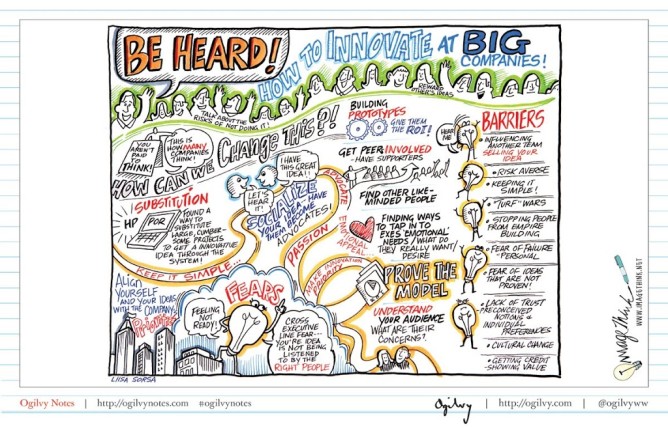I come into work one morning. I go get a cup of coffee, say “hi” to folks, and sit down at my computer. I fire up Outlook, read my new email, and answer a few questions. And without thought, I head over to Facebook before I start my work. I read through a handful of my friends’ status updates before it hits me.
What the heck am I doing?
It’s my choice how I spent my time at work, and how much time I spend at work. Is reading Facebook what I really want to be doing – even just as a five minute mental break?
I close the Facebook window and sat back. No, Facebook is not really how I want to spend my time. What I really want to do was to leave work early to go work on my book. (At the time, I was writing a science fiction novel.) What I also want to do was prove there was a connection between printer installation failures and people returning their products – a theory I’d had for a while, and which was widely believed, but never actually quantified.
That’s the exceptional stuff. And of course there is my business-as-usual job basics. But reading Facebook and answering email isn’t going to get me out of work early so I could go write, and it isn’t going to get my pet research project done.
I sit down and made a list of the most important things I need to get done that day.
#1 on that list is to move the research project forward, which meant I needed a source of email addresses of customers who had an installation failure.
#2 is to analyze survey feedback on one of our support tools, and send out the results.
#3 is to get everything else done so I could leave work a little early to go write.
Determined to stay focused, I ignore email, Facebook, gadget blogs, work social media, and all other distractions. With laser sharp focus, by 11am I have done my two most important and urgent things: moving the research project forward, and analyzing the survey feedback. I finish so quickly I realize that the only barrier stopping me from getting them done earlier was simple procrastination and distraction.
By 1pm I take care of my other business as usual work, and by 3pm I am sitting in a coffee shop working on my book.
This becomes a habit for me. Each day I start work, I made my list of 1 to 3 really important things I needed to do.
The idea for this actually came from Tim Ferriss’s book: The Four Hour Workweek . The idea that Tim put out there was that most of our work day is procrastination: whether it is procrastination by reading email or blogs or Facebook or make-work. And if we just did our really important work, we’d be done in half the time and with twice the effectiveness
. The idea that Tim put out there was that most of our work day is procrastination: whether it is procrastination by reading email or blogs or Facebook or make-work. And if we just did our really important work, we’d be done in half the time and with twice the effectiveness
I don’t know if any of you ever read David Allen’s Getting Things Done , but he advocates all these lists: lists of things to do at home, by a phone, at work, in front of a computer. Lists and lists and lists. The system is effective for reducing stress and improving productivity, but it doesn’t really help you focus on what’s most important. So you are doing more, but are you doing the right things?
, but he advocates all these lists: lists of things to do at home, by a phone, at work, in front of a computer. Lists and lists and lists. The system is effective for reducing stress and improving productivity, but it doesn’t really help you focus on what’s most important. So you are doing more, but are you doing the right things?
I practice this habit of making a list of 1 to 3 key things each day for months. I made refinements too: making a list of 1 to 3 key things for each week, so I have a general theme for the week.
Most importantly, I make sure that most days, unless the list was truly filled with crucial and urgent business as usual stuff, I put at least one item that moved my own innovation projects forward. I make it a point to get that work done before lunch.
Sure, I still have plenty of business-as-usual things to do, but I’m consistently making progress on my innovation projects.
I am working on one of these innovation projects, when I have a new insight. The idea I am working on is the application of recommendation engines to our newest generation of web connected printers.
Each day I am putting something related to the project on my most-important-task list. For several weeks running I worked on getting access to the data we had, then on how to understand the data. After that, I focused on coding the algorithm. Then I blog about it in the internal company blogosphere, then I optimize my code some more. Then I get some additional data. Then optimize based on the new data.
It finally hits me: I am procrastinating yet again. I am only doing the parts that are comfortable to me. I love coding, and I love data analysis. I love writing and I love blogging.
Those were the things I’d do anyway, even if they weren’t on my most-important-task list.
What I need on my task list is the stuff I am less comfortable with: promoting the idea. I need to make slides to boil down the concept and show the project results. I need to find out who the key players were that would care about app recommendations, and talk to them. I need to sell my idea. I was coding away, thinking I was moving my idea forward, when really I was just procrastinating to avoid talking to people.
This isn’t just a problem that software developers have. I have a friend who is a great salesperson and business person. He loves to talk to people, to build up excitement about a project or an idea. He’s had many great ideas for interesting products, but they tend to remain at a very abstract level: talking points, rather than mockups of screens or detailed documentation. He procrastinates when it comes to the detail level stuff.
Now when I made my 1 to 3 item list, I make sure that my own project ideas are on the list, and I make sure that I’m picking the things I need most to move my project forward. Not just the most fun or most comfortable ones, but the ones that make the biggest impact.
When I finally get around to promoting the recommendations project, I create a set of slides. I deliberately choose to show a high fidelity mockup of what the recommendations might look like, guessing that this would be the best way to describe the concept. I include example data I had run through my algorithm, and a high level description of the algorithm. I feel out who the key people were, then sent then my slides.
That same day the slides started getting forwarded around inside the company, and made their way to several managers and engineers Another engineer in a different part of HP turned out to be working on something similar, and he contacts me so we could share techniques.
Other managers were impressed with the work, and get in touch with my manager to talk about it. To date the idea hasn’t been implemented for customers, which would have been the ideal outcome to me. But I’m sure it will eventually, and when it does, it’ll be influenced by the work I did.
Pattern:
Context: Any idea you are going to pursue is going to require time to work on it: time to shop it around, improve it, sell it, implement it.
Obstacle: Most people are fully booked. If they look at their life, they don’t see any free time they can use for anything they are not already committed to.
Solution: Start each day with a focused list of a maximum of 3 most important things to accomplish that day (less if possible). Keep a laser sharp focus on getting those 3 most important things done. You should be done, in most cases, by 11am, leaving most of the day to get the rest of your business as usual work done.









